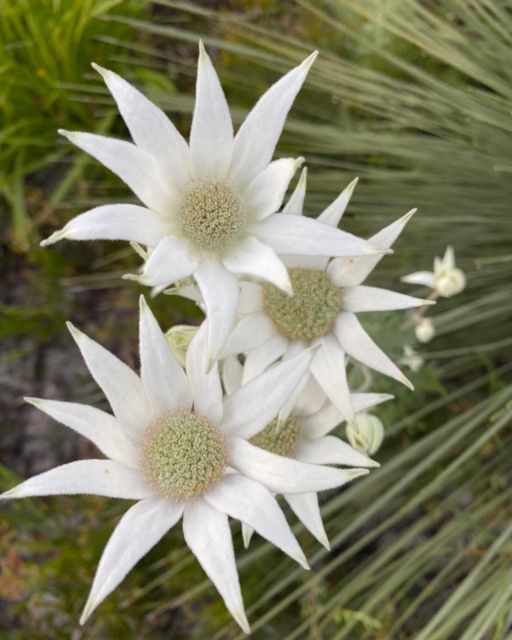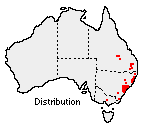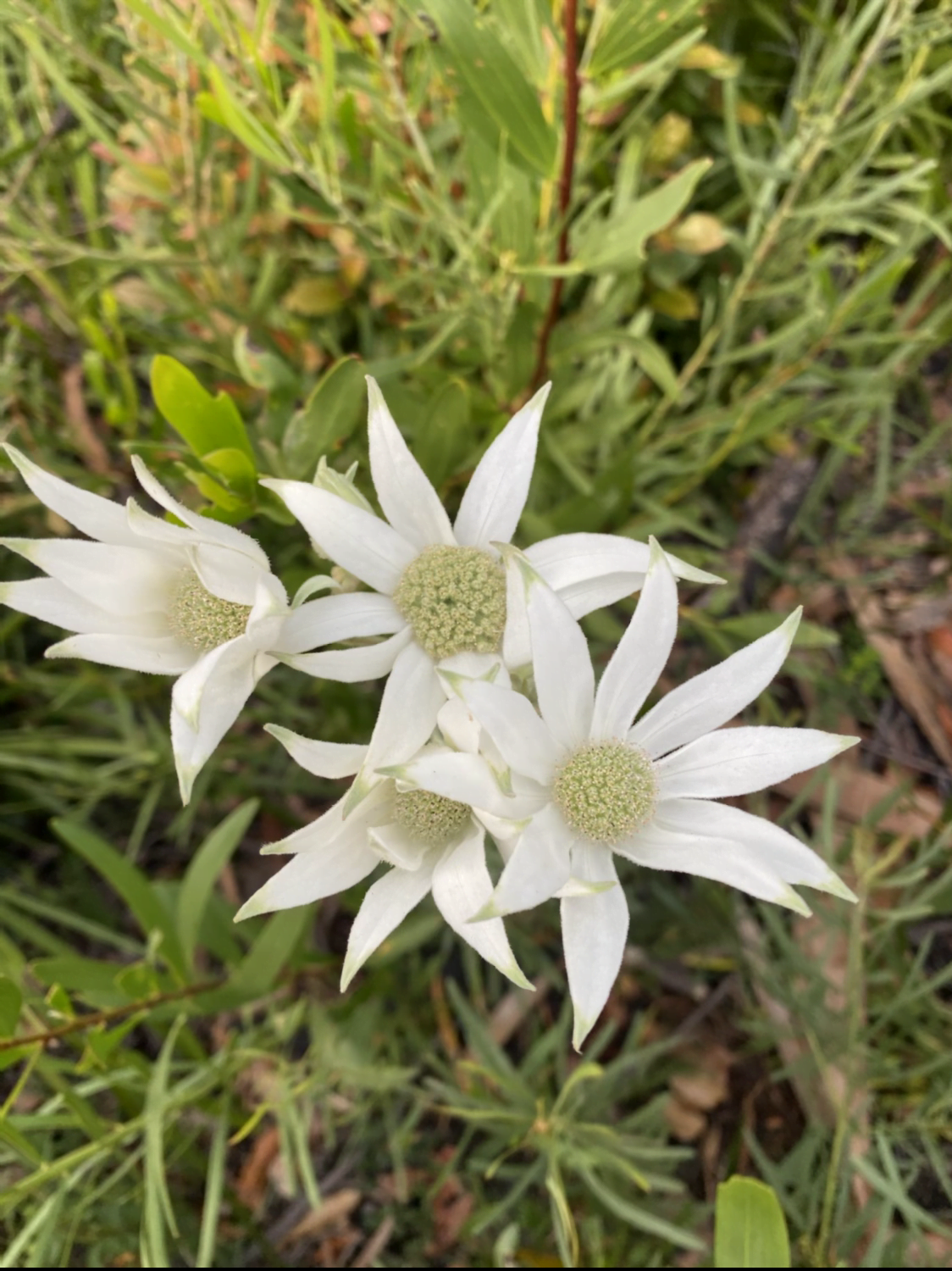
Actinotus Helianthi
Common name: Flannel flower
I grow best: Full sun/ part shade
• Attracts birds, native bees and invertebrates
• Flowers September- November
• Well drained, shallow sandy soils, exposed situations
• Cultural uses
• Eastern Suburb Banksia Scrub
Looks like: The entire plant has a soft woolly feel due to the presence of soft white hairs. The leaves are biternately divided and alternately arranged and are an attractive grey-green colour. The inflorescences of the plant has a simply ‘daisy like’ shape that is highly characteristic and ranges in size from 2.5-8 cm. The flowers are arranged in umbels that range in size between 12-20 mm diameter. The umbels are surrounded by bracts that are very soft to the touch and are characteristic with their white and green tipped colour. The size of the plant depends largely on environmental conditions, but it can vary in height between 0.5 m and 1.5 m. The nature of the plant also varies between a large herbaceous plant and a small shrub.
Habitat & Growing: Endemic to Australia and has a natural range extending from central and south-eastern Queensland down to the south coast and western slopes of New South Wales. Plant grows in temperate conditions and can prosper in a wide range of environments including coastal heath, scrub, and dry sclerophyll forest, shallow sandy soil and exposed situations. Actinotus helianthi is tolerant to mild frost once established but for the plant to prosper it requires a well-drained moderately acid (pH5-6) soil, as it will not tolerate “wet feet”. The plant grows in full sun or part shade but and may need protection from wind due to the shallow root system.
Gradual flowering throughout the year with a peak during September- November. Pruning after flowering will increase the bushy habit of the plant and increase the number of flowers produced in the following year. Shaping can also be achieved by pruning and as such Actinotus helianthi makes an excellent potted plant or decorative shrub.
Propagation is best by fresh seed, and the plant is able to quite successfully self-seed. Firm cuttings have also been successful for propagation. Plant health can be maintained by planting the plant in the final position, as transplantation can be highly stressful. The addition of mulch also helps to protect the root system, which are highly sensitive to damage. A slow release fertiliser can also be used to optimise growth, and a raised bed can be used to help avoid damage through “wet feet”.
| Family | Apiaceae |
| Plant Type | Small shrub |
| Width | 0.5 |
| Flowering Time | Spring, Summer |
| Soil Type | Sandy, Sandy loam, Potting mix |
| Climate Zone | Warm temperate, Cool temperate, Mediterranean |
| Growth Habit | Evergreen, Open foliage, Mound-shaped |
| Soil Moisture | Dry, Well-drained |
| Special Uses | Cut flower, Pipe and drain friendly |
| Height | 1.2 |
| Flower Colour | White |
| pH Level | Acid, Neutral |
| Plant Environment | Courtyard, Container growing, Cottage garden, Flower garden, Coastal garden, Drought resistant, Wildflower meadow |
| Light | Sunny, Light shade |
| Lifespan | Perennial, Short lived |
| Frost Tolerance | Tolerates light frost |
| Attracts Wildlife | Bees, Butterflies, Other insects |
Distribution:

Traditional uses: Contains medicinal benefits. Its phyto-actives help to penetrate the skin to deliver hydration and increase elasticity whilst reducing the appearance of dark circles and puffiness caused by inflammation and dehydration.

